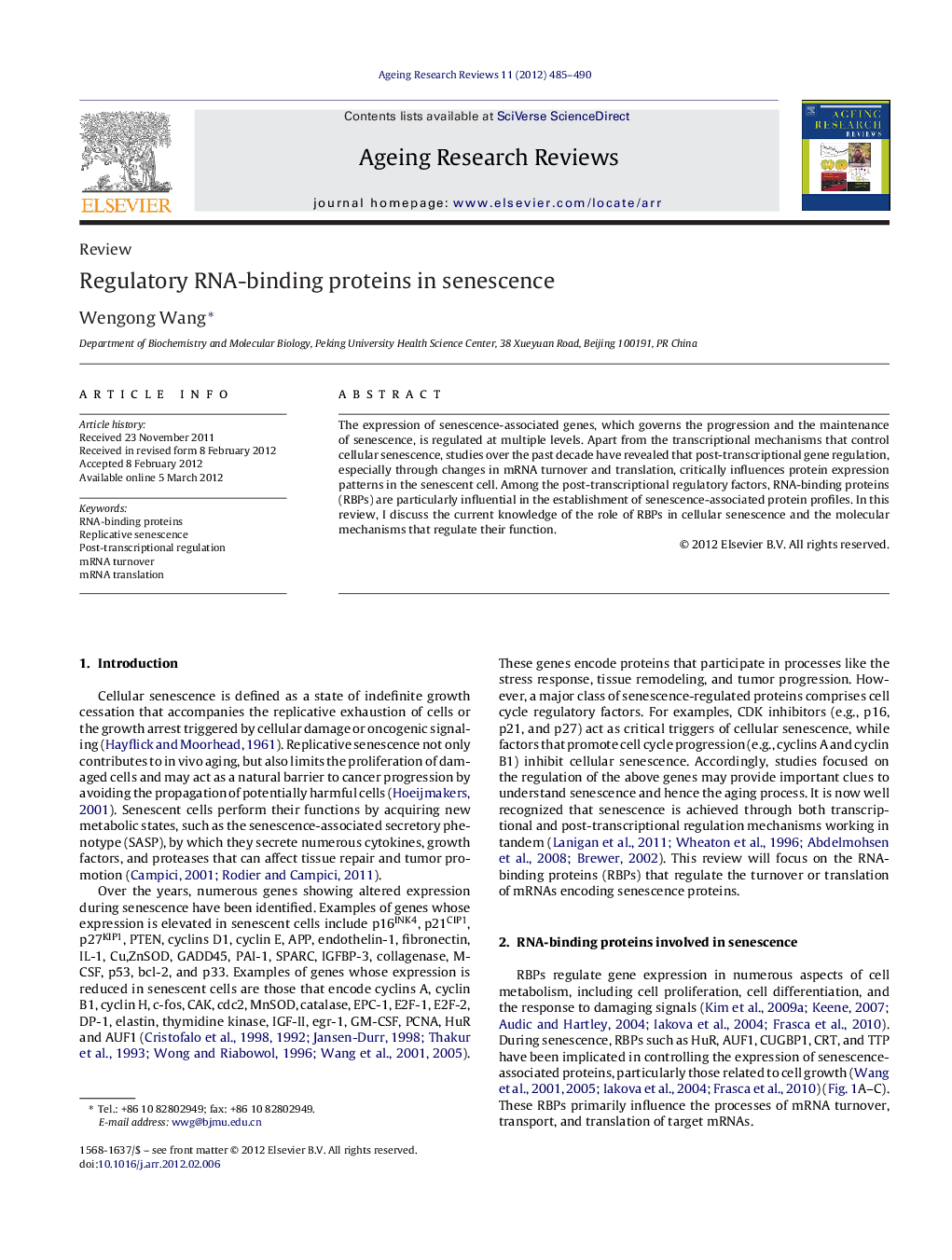| Article ID | Journal | Published Year | Pages | File Type |
|---|---|---|---|---|
| 1902283 | Ageing Research Reviews | 2012 | 6 Pages |
The expression of senescence-associated genes, which governs the progression and the maintenance of senescence, is regulated at multiple levels. Apart from the transcriptional mechanisms that control cellular senescence, studies over the past decade have revealed that post-transcriptional gene regulation, especially through changes in mRNA turnover and translation, critically influences protein expression patterns in the senescent cell. Among the post-transcriptional regulatory factors, RNA-binding proteins (RBPs) are particularly influential in the establishment of senescence-associated protein profiles. In this review, I discuss the current knowledge of the role of RBPs in cellular senescence and the molecular mechanisms that regulate their function.
► RBPs-mediated posttranscriptional regulation is important for the process of cellular senescence. ► The turnover or translation efficiency of an individual mRNA encoding a key regulatory factor of cellular senescence may be regulated by multiple RBPs. ► Interaction between different RBPs determines the fate of mRNAs (e.g., turnover, translation). ► Protein phosphorylation is an universal modification for RBPs involving in cellular senescence.
